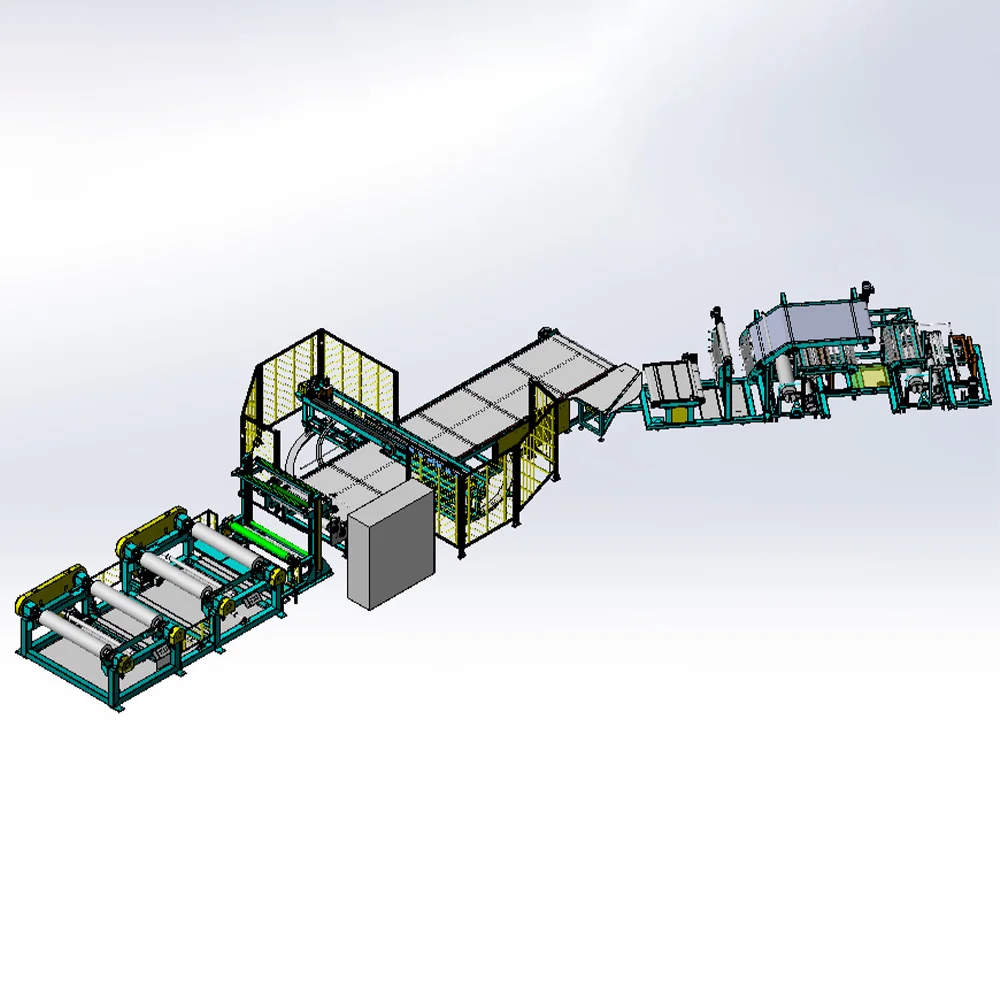The automatic ply cutting machine represents a significant advancement in the automation of composite material processing, particularly within the tire and rubber industries. Leveraging intelligent systems, robotic integration, and advanced vision technology, this equipment drastically reduces manual labor, improves production efficiency, and ensures consistent product quality. In this blog post, SONIWELL, as a professional tire bias cutting machine exporter, will share the working principle of automatic ply cutting machine for sale.
Advanced Control Systems for Stable Operation
At the core of the automatic ply cutting machine lies a state-of-the-art control system designed to comply with international standards. This high-performance system enables seamless coordination among mechanical, electrical, and pneumatic components, ensuring stability during high-speed operation. Real-time monitoring of cutting parameters, diagnostics, and data logging functions are incorporated to guarantee safe and reliable performance under various working conditions.
The integration of industrial PLCs (Programmable Logic Controllers), HMI interfaces, and real-time feedback loops enables precise control over complex operations, such as splicing, cutting, stripping, and rolling. These systems form the brain of the machine, making autonomous decisions based on sensor input and programmed logic.
Fully Automated Operation with Minimal Downtime
One of the most notable features of the automatic ply cutting machine is its fully automated workflow. From material let-off to final rolling, each step is conducted automatically without the need for continuous operator intervention. Automation minimizes human error and substantially reduces downtime, thereby increasing overall throughput.
Sensors and actuators work in synchronization to detect material feeding conditions, monitor conveyor belt alignment, and control the timing of splicing and cutting. These automated actions ensure high operational efficiency and reduce dependence on skilled manual labor.
Flexible Let-Off Station Configuration
The machine provides two selectable configurations for the let-off station:
* Rotatory dual-station let-off
* Front and rear dual-station let-off
Each configuration supports both manual and automatic splicing of the ply, offering greater flexibility depending on the material type and production requirements. The dual-station design allows for continuous operation by enabling one roll to be prepared while the other is active, thus eliminating delays during roll changes.
In automatic splicing mode, the machine can align, position, and splice the new ply roll without stopping the line, further enhancing productivity.

Precision Stripping via Dual-Servo Drive System
The main conveyor belt stripping device employs a dual-servo drive structure, allowing for highly precise positioning during the stripping process. Unlike traditional single-motor systems, dual-servo configurations offer independent yet coordinated control over movement, which significantly improves the alignment of ply edges and accuracy in feed lengths.
This mechanism is particularly important when dealing with multi-layered composite materials that demand stringent dimensional control. The servo system ensures repeatability and minimizes material waste during setup and operation.
Vision-Guided Robotic Splicing Process
One of the highlights of the machine is its use of a vision + robotic solution for the splicing process. High-resolution industrial cameras identify the ply edges and determine the optimal cutting and joining points. The data is then transmitted to a robotic arm, which performs the splicing with exceptional precision.
This intelligent combination ensures:
* Consistent splice quality
* Precise alignment of materials
* Significant reduction in operator intervention
* Improved material utilization
As a result, the splicing output is not only visually flawless but also mechanically strong, ensuring product integrity in downstream processes.
Fully Automated Rolling Process
After the ply is cut and spliced, it proceeds to the rolling section, where the machine achieves a fully automated rolling process. The operator's role is limited to cart replacement, simplifying overall labor requirements and enhancing ergonomics on the production floor.
Sensors detect the completion of a rolling cycle and signal the system to initiate cart change. The automatic transition between operations improves cycle time and reduces manual handling errors.
Rolling Mechanism with Automatic Angle Rotation
The rolling mechanism is equipped with automatic angle rotation functionality, which ensures optimal rolling orientation based on ply specifications. This function is crucial for maintaining tension uniformity and roll consistency across various ply types.
By rotating the rolling head to precise angles, the machine can handle:
* Varying material widths
* Different roll diameters
* Specific layer orientations
The angle rotation feature minimizes wrinkling and misalignment during the roll-up phase, thereby enhancing downstream processing performance.
Summary and Industrial Benefits
In conclusion, the automatic ply cutting machine operates based on a sophisticated synergy of automation technologies, mechanical engineering, and intelligent vision systems. Its core working principles revolve around the following:
* Integration of advanced control systems for seamless operation
* Full automation from let-off to rolling, minimizing downtime
* Dual-servo drive mechanisms for accurate material handling
* Vision-guided robotic splicing for consistent quality
* Automatic rolling and angle control for uniform output
This machine is ideally suited for industries requiring high-volume, high-precision processing of rubber or composite sheets, such as tire manufacturing, conveyor belt production, and industrial textiles.
By replacing labor-intensive manual operations with intelligent automation, the automatic ply cutting machine not only improves production efficiency but also enhances safety, product consistency, and cost-effectiveness over the long term.
www.soniwellgroup.com
SONIWELL
